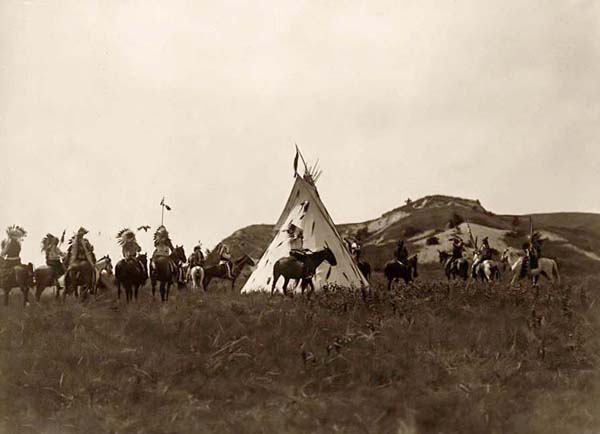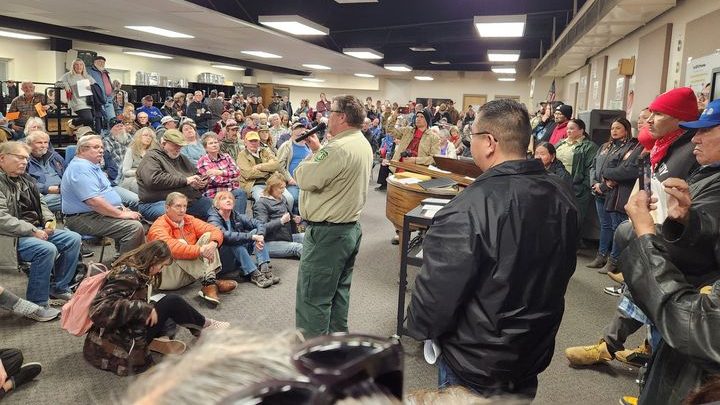Blog by Taylor Gunhammer, BHCWA Board Member – August 2023
Originally Delivered at the Mni Kin Wakan Water Summit, Rapid City, SD
The colonization of the Black Hills and the attempted genocide of its peoples is inextricably tied to mining. Mining was the catalyst for the military violence and land grabs that have forced us and the land to our present condition, wherein the United States and the State of South Dakota carry out willful violations of Constitutional and Tribal treaty rights every single day. Granted, there are now various non-mining business interests in the Black Hills who are against the honoring of treaties with tribes, for their own economic reasons. But each and every one of them have illegal mining on treaty land to thank for the opportunity, since 1872.
While all anti-mining organizing is difficult, opposed by extremely wealthy interests, and can in fact be dangerous, in the Black Hills we are not simply in a fight to protect water. Here we are also required to bear the weight of over 150 years of colonial violence and theft being rebranded as “pioneer history,” to the point that many of the area’s most prominent tourist attractions are celebrations of the mining operations that began, grew, and reinforced the oppression of its Indigenous peoples.
In a cultural sense, the mining industry in Hesapa actually spent a very short time being about pure greed. It graduated in just a few years, via military violence and anti-Indigenous Federal policy, to being also a proxy for white supremacy, Manifest Destiny, and the American promise of plentiful Indian land that could be occupied exclusively by white settlers.

Because Oceti Sakowin people are this land, which we made very clear upon contact with settlers, it is a mistake to consider anti-mining in the Black Hills to be a purely ecological fight. While greed always was and still is a factor in the continuance of mining operations on our sacred lands, there is a governmental philosophy beyond capitalism that guides the decisions of American officials to this day. In terms of Federal policy: to harm, degrade, subjugate, scar and exploit Indian Land, is to treat it like an Indian. And if we notice the face on a 20-dollar bill (or a 5-dollar bill), if we take note of the honoring and celebration of George A. Custer that happens here, it should be well-understood that to be anti-Indian is to be seen as supremely American. When it comes to mining, that notion translates easily.
A large part of why the Black Hills Alliance in the ‘80s was so impactful was that it began to threaten the fortification that white supremacy and environmental racism had been providing for illegal mining in the Hesapa. There was a moment where settler and Native interests were aligned in the understanding that no one wants uranium in their drinking water, and uranium mining causes that. In a moment of historic clarity, non-native community members who did not stand to financially profit from the mining that would destroy their own drinking water came to recognize that their survival is tied irrevocably to the people who have always held the lands they occupy as sacred. All at once, being opposed to Indians in general was deprioritized and thought of as self-harming.

In Custer, a similar energy halted the progress of F3 Gold’s Newark exploration project. Notably, in the town hall meeting where that energy came to a head, I personally witnessed white people from Custer screaming at a Forest Service ranger to “Listen to these Indians!” and “Honor the treaties!”
"If we are to be effective in organizing ourselves against the dangers of mining in Hesapa, we cannot fail to recognize that focusing solely on environmental health is not enough."
If we are to be effective in organizing ourselves against the dangers of mining in Hesapa, we cannot fail to recognize that focusing solely on environmental health is not enough. Whether or not we’re aware of it, anti-mining work is LandBack work. Because the 1872 General Mining Act is a patent violation of the 1868 Fort Laramie Treaty, I believe that successfully removing the boot of mining from our necks makes the honoring of our treaty rights inevitable. Of course, this is terrifying to extraction companies and devout racists. But the closer Oceti Sakowin peoples get to justice, the closer we all are to surviving the ecological impacts of a mining industry that is eager to ravage Hesapa and leave a cyanide-poisoned gravel pile where it used to be.
LandBack means safe water. Indigenous peoples protect 80% of the remaining biodiversity on earth.
